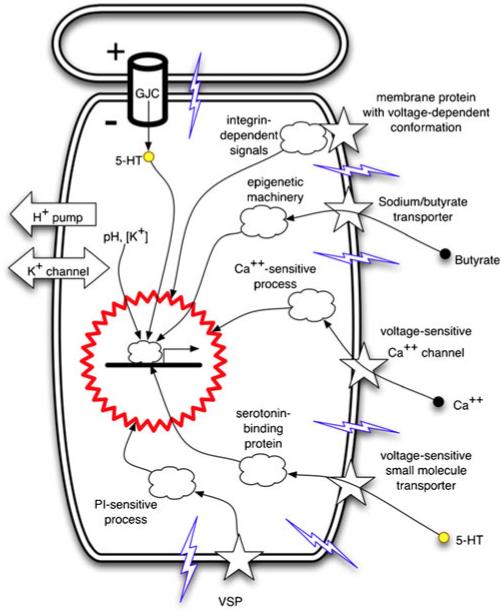Fig. 7.
Known mechanisms by which transmembrane potential changes are transduced to downstream effector pathways. Changes of Vmem are physical processes that need to be converted into second messenger pathways and ultimately into transcriptional responses. Cell-autonomous mechanisms by which cells sense their depolarization or hyperpolarization include: electrophoretic transfer of small signaling molecules (Ca++, 5-HT) through gap-junctional connections (GJC); voltage potential-mediated changes of integrin conformation (leading to activation of integrin pathways); regulation of transport of small molecules (e.g., the sodium/butyrate transporter) that impact chromatin modification; activation of voltage-gated calcium channels (thus impinging on the many pathways controlled by calcium); voltage-dependent activity of small signaling molecule transporters (such as SERT, the serotonin transporter) or of phosphatases (such as the phosphatase and tensin homolog; VSP voltage-sensitive phosphatases). Illustration is taken from Levin 2007b, Fig. 1a, with permission of Elsevier

